COMMONLY FOUND WOOD |
| Since ancient times woods have been used for tools, weapons, furniture and home constructions. Wood, in simple terms, is structural tissue found in the stems, roots, and trunks of trees. However, not all wood is created equally; some woods are better suited for some types of construction, while some woods are better suited for firewood. The uses of woods depends on many factors including their physical properties such as density, texture, strength, hardness, stiffness, moisture, shrinkage, and flammability. |
| Wood is classified into two primary classes: hardwood and softwood. The differences are not based on actual hardness of the wood, but on their reproduction methods. Hardwoods are from seed barring deciduous trees like maple, oak, and walnut trees, and softwoods are from gymnosperm trees, those that produce cones like pine, fir and spruce trees. |
| JUMP-Menu |
| Alder Ash Aspen Basswood Beech Birch Cherry Ebony Elm Hornbeam Juniper Koa Korina Larch Lime Mahogany Norway Maple Oak Paulownia Pear Rosewood Scots Pine Sitka Spruce Spruce Tiger Maple |
| Wood | Description |
|---|---|

Alder (Alnus glutinosa) 28 lbs. - 34 lbs. |
Alder: A versatile wood used for electric guitar bodies, offering a balanced tone. Electric Guitars: Body: Alder, ash, mahogany, and basswood are common, offering a range of tones and weight. |
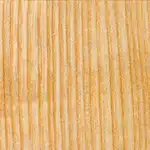
Ash (Fraxinus excelsior) 40 lbs. – 53 lbs. |
Ash: Another popular choice for electric guitar bodies, often associated with a bright, resonant tone. Electric Guitars: Body: Alder, ash, mahogany, and basswood are common, offering a range of tones and weight. Tool handles, bats, hockey sticks, oars. |
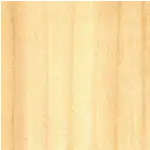
Aspen (Populus tremula) 28 lbs. - 30 lbs. |
|

Basswood (Tilia americana) 25 lbs. - 26 lbs. |
Basswood: A relatively soft wood, often used for affordable electric guitars, known for its balanced tone. Electric Guitars: Body: Alder, ash, mahogany, and basswood are common, offering a range of tones and weight. |

Beech (Fagus sylvatica) 32 lbs. – 56 lbs. |
|
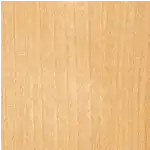
Birch, Silver (Betula pubescens) 42 lbs. |
|

Cherry, Wild (Prunus avium) 43 lbs. – 56 lbs. |
Beautiful color and workability. |

Ebony, Gaboon (Diospyros crassiflora) 60 lbs. - 64 lbs. |
Ebony: Often used for fingerboards and bridges, providing a smooth, dense surface. |
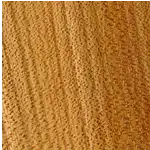
Elm, Wych (Ulmus glabra) 34 lbs. – 37 lbs. |
|
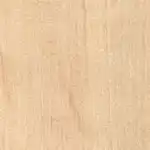
Hornbeam (Carpinus betulus) 46 lbs. |
|
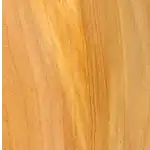
Juniper, Common (Juniperus communis) 35 lbs. |
|

Koa (Acacia koa) 38 lbs. - 42 lbs. |
Koa: Offers a warm, balanced tone with a beautiful grain pattern, often used for backs and sides of acoustic guitars. Acoustic Guitars: Back and Sides: Mahogany, rosewood, maple, and koa are popular choices, each offering unique tonal characteristics. |

Korina (Terminalia superba) 23 lbs. – 34 lbs. |
|

Larch, European (Larix decidua) 31 lbs. – 35 lbs. |
|

Lime, Small-leaved (Tilia cordata) 33 lbs. - 35 lbs. |
|

Mahogany, African (Khaya ivorensis) 24 lbs. - 36 lbs. |
Mahogany: Known for its warm, rich tone, it's used in both acoustic and electric guitars for necks, backs, and sides. Acoustic Guitars: Back and Sides: Mahogany, rosewood, maple, and koa are popular choices, each offering unique tonal characteristics. Electric Guitars: Body: Alder, ash, mahogany, and basswood are common, offering a range of tones and weight. |

Maple, Norway (Acer platanoides) 26 lbs. – 42 lbs. |
Maple: Offers a bright, clear tone, used for bodies, necks, and sometimes fingerboards. |

Maple, Tiger (Curly) (Acer saccharum) 44 lbs. |
Acoustic Guitars: Back and Sides: Mahogany, rosewood, maple, and koa are popular choices, each offering unique tonal characteristics. Neck: Maple is frequently used, often paired with a rosewood or maple fingerboard. |
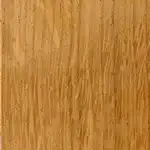
Oak, Pedunculate (Quercus robur) 37 lbs. – 56 lbs. |
Strength and durability. |

Paulownia (Paulownia tomentosa) 15 lbs. - 19 lbs. |
|

Pear (Pyrus communis) 38 lbs. – 45 lbs. |
|
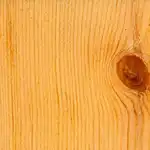
Pine, Scots (Pinus sylvestris) 22 lbs. – 31 lbs. |
|

Rosewood, Eastern (Dalbergia latifolia) 52 lbs. - 53 lbs. |
Rosewood: Provides a complex, warm tone with good sustain, commonly used for fingerboards and bridges, as well as backs and sides. Acoustic Guitars: Back and Sides: Mahogany, rosewood, maple, and koa are popular choices, each offering unique tonal characteristics. Neck: Maple is frequently used, often paired with a rosewood or maple fingerboard. |
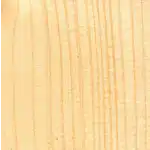
Spruce, Norway (Picea abies) 25 lbs. – 44 lbs. |
Acoustic Guitars: Soundboard (Top): Spruce (like Sitka spruce) and cedar are widely used for their tonal qualities. |
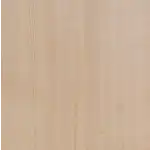
Spruce, Sitka (Picea sitchensis) 27 lbs. - 28 lbs. |
Acoustic Guitars: Soundboard (Top): Spruce (like Sitka spruce) and cedar are widely used for their tonal qualities. |